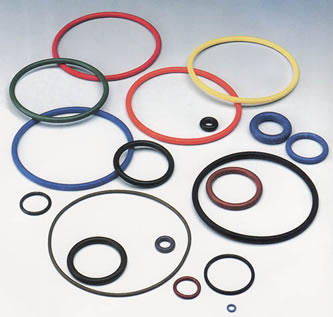The manufacturing and installation of specialty seals must be handled in a certain way to ensure their quality and longevity.
The following guidelines and/or rules are the basics for regulating the engineering of seals to ensure top performance.
 Performance vs Knowing Your Seals
Performance vs Knowing Your Seals
The performance of your machine(s) depend on the quality of your seal and the conditions they succeed in. They can directly affect how well or how poorly your machines function. By extending the life and care of your seals, you can, in turn, extend the life of your equipment.
Understand Dynamics of the Application
The dynamics of specialty seals are imperative to the overall operation of the equipment. Take into consideration a seal’s needs and environment, such as the alignment, vibration, and deformation risks which can ruin the entire machine.
Ensure that you understand how each dynamic affects the general performance. For example, pay attention to any offsets or misalignment that may occur. Keep a record of the vibration. These small factors can severely affect the usability of your equipment.
Maintain an Ideal Temperature
Both external conditions and internal fluid movements of the machine can affect the temperature of the seal. Frictional heating can increase its temperature little by little, until it affects the overall performance of the seal. There is a certain temperature limit that a seal can reach, and if it extends beyond that limit, it is susceptible to various forms of damage. Don’t prematurely age the seal by exposing it to extreme heat.
Keep Them Under Pressure
Seals, unlike humans, thrive under pressure. They actually require a certain amount of pressure to be placed on them in order for them to perform correctly. But don’t apply too much pressure at once, or else your seal will experience a blow-by, meaning that the fluid will completely bypass the seal, causing damage to the machine.
There is a correct amount of pressure to take into consideration. Spikes in pressure should also be factored for, just in case it happens. Keep a constant watch of the conditions of pressure being applied to your seal to ensure it is not in danger of breaking down.
Track the Time
Seals, like any physical component, have a lifespan. They undergo constant pressure, meaning that over time, their performance will suffer. Make sure you keep track of how long you’ve had each seal, what maintenance looks like, and whether it’s worth continuing to keep that specific seal after it ages.
Remember that every component of a hydraulic machine should be in ideal shape in order to perform at peak capabilities. After parts start to age, the performance will suffer, degrading the very nature of the machine itself.
Don’t forget to take parts fatigue into account at all times. It can save you from having to spend an unnecessary amount of money on repairs for something that could be avoided.
Parts of the original article were gleaned from Real Seal's website here.
For more information about finding the ideal seal, contact Gallagher's Engineering department today.
